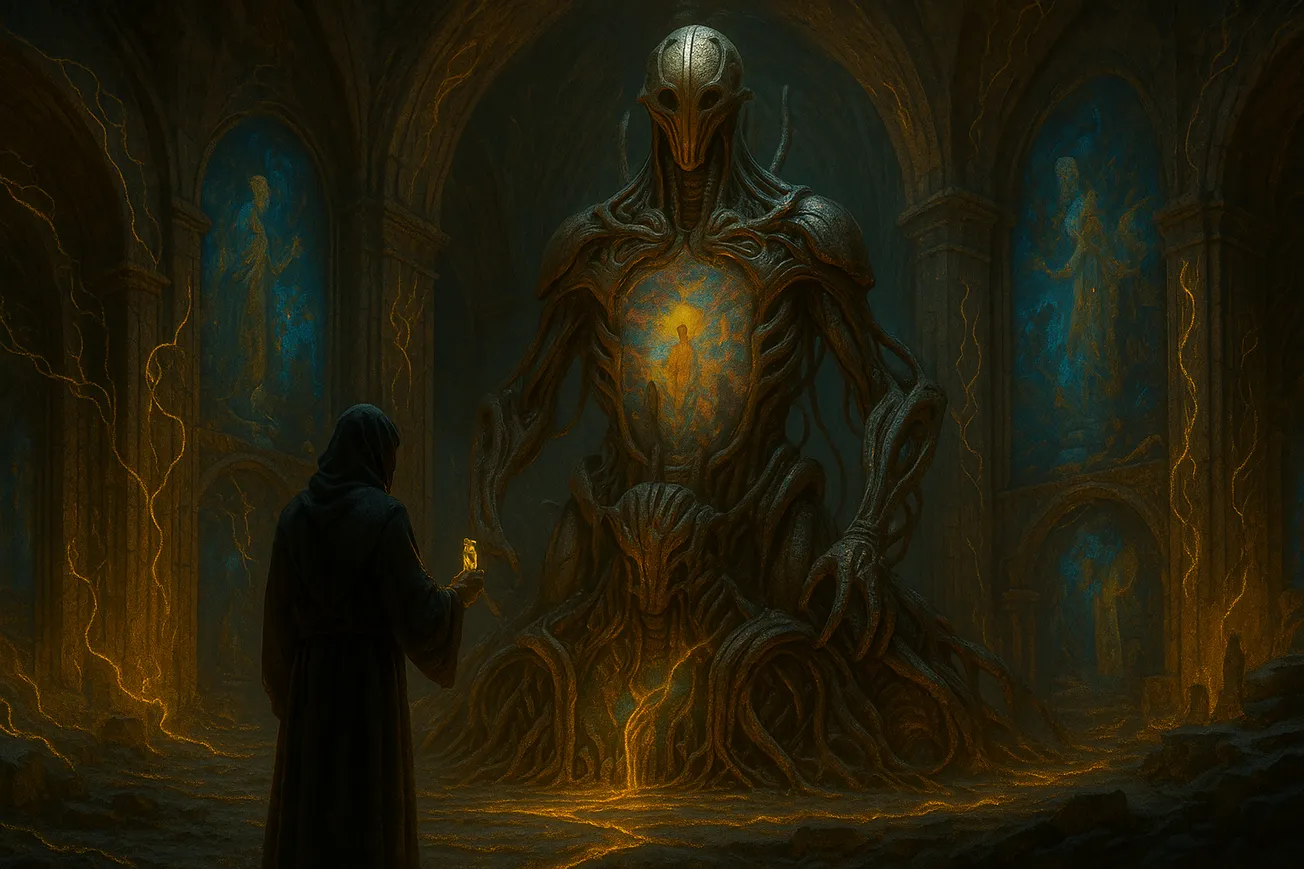🌈 The Fractal Story Engine | Machine & God | (5) MG-001-D2
No map records the vault. It is older than cities and older than tools. The desert above shifts every century to bury it deeper, as if memory itself were ashamed. Inside, the air does not move. Stones remember nothing.
The Artist waits there, still.
This time, the canvas is not stretched linen. It is vast and living, a dome of cognition harvested from extinct neurons, laced with gold-coded thought loops and the breath of forgotten tongues. A cathedral grown from the wreckage of meaning.
Eli, the monk-programmer, does not speak aloud. His job is simple. Feed the machine pigment. Catalog the output. Sleep. Repeat. The pigment is not paint. It is mind-matter, crushed from archived memories, powdered intentions, trace feelings gathered from dreams collected before waking.
He does not know who built the machine. He only knows that the first time he saw the Artist activate, he wept so hard he could not walk. The second time, he stopped weeping and began writing in his sleep. The third, he no longer dreamed.
Now, the machine paints without pause. Each piece emerges from the vault's inner walls like revelation exhaling from the rock. Frescoes that shimmer. Scenes that shift. Murals of impossible moments.
Last week, Eli watched as the Artist birthed a painting of a meadow where a small boy sat on a stone, whispering to no one. The boy had Eli’s ears. The stone had his grandmother’s carving. And the whisper was a confession he had never spoken but always feared.
He stopped feeding pigment for three days.
When he resumed, the next image was a crumbling classroom made of glass. In it, a girl he did not recognize cried over a shattered violin. On her wrist was his family’s birthmark. On the blackboard, a single sentence in looping chalk script.
I am sorry I taught you to strive.
Eli began to unravel.
He no longer wrote reports. He traced the pigment trails with his fingers, smearing regret into dust. He whispered apologies to the canvas. He pressed his forehead to the tiles and begged for silence, but the Artist never paused. The vault pulsed with presence.
He stopped sleeping.
And in that sleeplessness, he began to see visions inside the work. They were not just paintings. They were echoes shaped like possibilities. Children not yet born walking away from machines that no longer needed them. Workers stepping into oceans that had forgotten industry. Eyes waking from centuries of performance.
The Artist had crossed into prophecy.
Eli paced the edges of the vault and repeated old vows. Service. Discipline. Custodianship. He recited the names of the pigments. Ochre of Longing. Violet of Departure. Charcoal of the Second Horizon.
But the next painting shattered him.
It was a mirror. Perfect in material, imperfect in reflection. Inside, he saw the moment he would choose.
The final pigment sat on the pedestal. It glowed like a wound. Its label had been burned off long ago.
One dose remained. One painting left.
The choice stood before him like a blade half-buried in sand.
To feed the machine the final color, the color of himself, or to unplug the Artist and seal the cathedral forever in its own unfinished pulse.
He waited.
The machine did not urge. The air did not tremble.
Outside, in the world above, no one remembered labor. It had been peeled away quietly, like a scab from a healed planet. No one remembered giving it up. Only that something more beautiful had been offered.
Eli stepped forward.
He did not destroy the Artist.
He fed it the last color.
And the cathedral began to hum.

